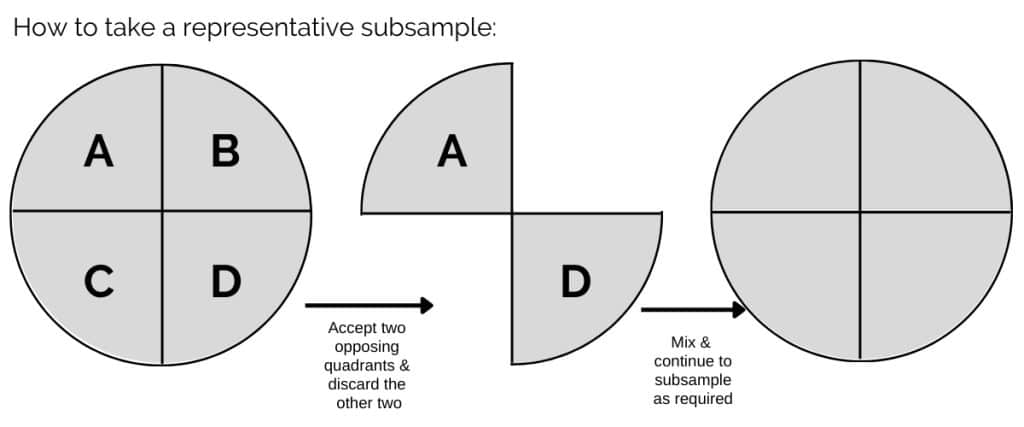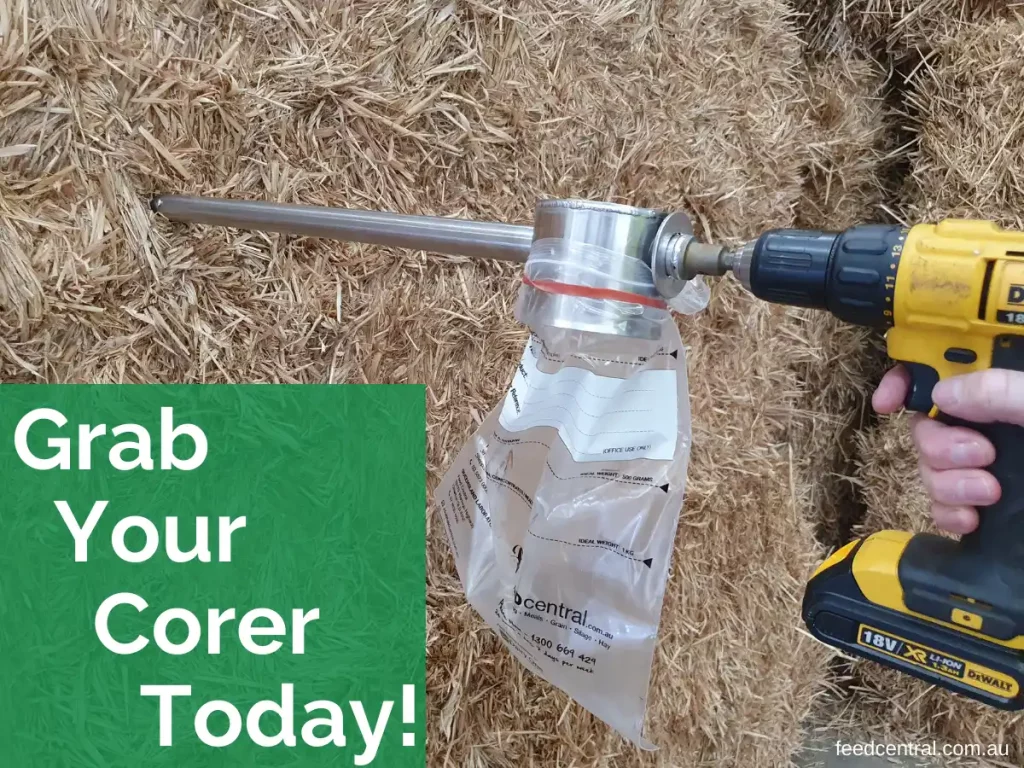How Much Sample Do You Need To Submit?
- Hay – 200 – 300g
- Silage/Fresh Sample – 500g – 1kg
- Grain – 1kg
- TMR – 1kg
How To Take A Sample
When feed testing it is important for the collected sample to be representative of the whole product. If the quality of your product varies, you may need to have multiple samples tested. The best method to take a representative sample is through the use of a corer; alternatively, you can take multiple random “grab” sample points of your product. If you believe that there are great differences in your product, you should submit the product as two separate samples.
As required, thoroughly mix your sample in a container and take a subsample of the composite to the recommended sample quantity (See below)
Hay
Randomly sample from at least 10% of the bales in your lot. Only sample once from each selected bale.
- Coring Method – core round bales on the side at the center of the curvature. Core square bales at the end of the bale and at a right angle.
- Grab Sample Method – select a random handful of products from the selected bales, ensuring that you are sampling from the inside of the bale (not the weathered exterior)
Grains, Meals, and Pellets
- Silo – A running sample is required, randomly drawing 5 or more samples.
- Trailer Load – Gather samples from 5 or more random locations from front to rear of the load. If possible, use a long, slotted grain probe to reach deep into the load.
- Bags – Probe diagonally from top corner to bottom corner from 10% of the bags in your lot.
Silage
- Pit/Bunker – It is preferred that the sample is collected before opening a pit or bunker by using a long coring probe that can reach deep into the pit or bunker. Otherwise, grab samples from 10+ areas randomly across a newly cut face of the pit or bunker.
- Wrapped Bales – sample from 10% or more bales randomly with a corer as similar to round bales of hay. Any holes made in the plastic must be immediately re-sealed.
Standing Crop/Pasture
Randomly sample from multiple points throughout the paddock, cutting samples at grazing height. Avoid collecting soil or manure with these samples.
Mixed Rations
Collect from freshly blended rations. Take 10 or more handfuls of the mix from multiple, random locations, mix and supply a sample of the composite.
How To Submit A Feed Sample
Clearly label your sample bag with your sample reference and complete the associated paperwork with the same reference.
- Drop off the sample to the Feed Central Office
- Post / Reply paid post to the lab address
For Wet Samples (Fresh samples, silages, rations)
When bagging your sample, aim to exclude as much air from the sample as possible. This may be achieved by vacuum sealing; or with a ziplock bag, rolling the sample to exclude air, and taping securely shut.
- Keep cool
- Deliver wet sample as soon as possible to prevent sample degradation – drop off or express post
- Avoid mail delays by posting your sample at the beginning of the week, and refrigerating samples over the weekend if required.

You can grab a copy of this document as a PDF here.
Grab a Hay Corer For Easy Sampling
We highly recommend a hay corer for taking the best samples from all places inside your bales. Grab a Corer today!
